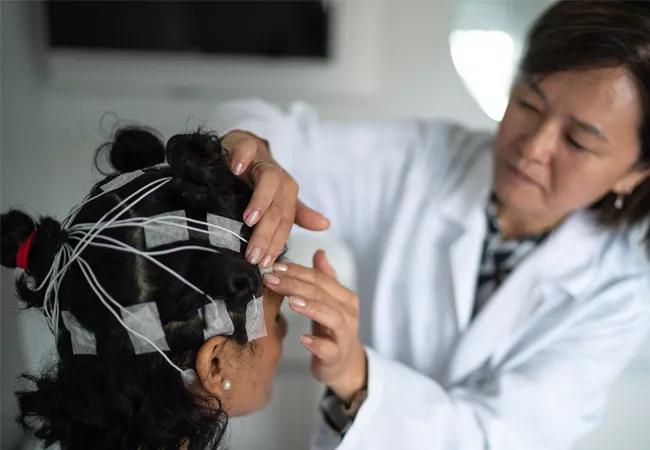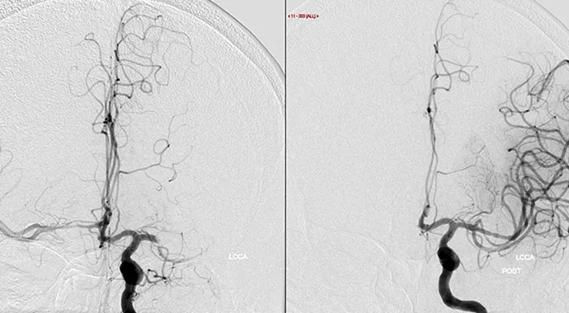Many patients unnecessarily continue the medications for years

Following a stroke, when a first-time convulsive seizure is witnessed or an electrographic one is detected by continuous EEG monitoring, many patients are appropriately started on antiseizure medications (ASMs). Sometimes, however, patients without evidence of seizure may be prescribed ASMs. Most are discharged from the hospital on ASMs. While 65% to 80% of these patients never have another seizure, many remain on ASMs for months or even years. This unduly exposes patients to unnecessary medication use and possible harmful effects and leaves them unjustifiably labeled with an epilepsy diagnosis.
Advertisement
Cleveland Clinic is a non-profit academic medical center. Advertising on our site helps support our mission. We do not endorse non-Cleveland Clinic products or services. Policy
Such concerns, along with guidance on initiating and discontinuing ASMs in patients following a stroke, were discussed in a presentation at the 2023 American Epilepsy Society (AES) annual meeting by Vineet Punia, MD, MS, an epileptologist with Cleveland Clinic’s Epilepsy Center.
“Assessing seizure risk — and patient preference — is critical for optimal management of potential seizures from acute brain injury,” says Dr. Punia. “Clinicians may be uncertain about seizure risk and therefore are reluctant to stop medications.”
So-called acute symptomatic seizures occur within seven days of a systemic infection, stroke or head trauma. Termed “symptomatic” for being a symptom of the brain insult, the seizures may be apparent (convulsive) or identified only by EEG. With the increasingly common practice of continuous EEG monitoring in intensive care units, detecting electrographic seizures has become more frequent. According to published reports, up to 15% of stroke patients develop an acute symptomatic seizure.
Dr. Punia recommends that identified post-stroke seizures be aggressively treated, as the risk of mortality increases if they continue. “Most patients with convulsive or electrographic seizures during hospitalization should be discharged on an ASM,” he says, noting that the risk of seizure recurrence is high in the immediate period.
In the absence of a documented seizure, he provides the following guidance for determining which patients are at high risk and should start ASMs at discharge:
Advertisement
Dr. Punia leads research in the use of ASMs in patients following post-stroke seizures. Data from Cleveland Clinic showed that two-thirds of patients who are started on ASMs during hospitalization are discharged on them, with more than 90% continuing on the drugs after their first follow-up visit to the stroke clinic (Ann Clin Transl Neurol. 2021;8[9]:1857-1866). In another study, 90% of patients still on ASMs at six-month follow-up had not had a seizure since hospital discharge, and many patients stayed on ASMs for three years or more. (Neurol Clin Pract. 2022:12[6]e154-e161).
Global practices are similar, according to data from a soon-to-be-published international survey Dr. Punia presented at the AES meeting: about two-thirds of providers continue ASMs at the first 12-week follow-up visit, and just one-third perform testing at that time. Patient preference is considered by only 10%.
“Any patient without a history of epilepsy who is taking ASMs following a stroke needs follow-up with a physician who feels comfortable assessing the need for long-term ASM treatment,” says Dr. Punia, who directs the Post-Acute Symptomatic Seizure (PASS) Clinic at Cleveland Clinic, the lead site of a multicenter network of clinics known as PASSION (PASS Investigation and Outcomes Network). “In our experience, most patients do not need to continue medications for a long time.”
Eight to 12 weeks following hospital discharge with ASMs, Cleveland Clinic patients are seen at the PASS Clinic. Each undergoes one-hour EEG monitoring before seeing a provider. Patients with epileptiform discharges should likely stay on ASMs, Dr. Punia states.
Advertisement
In addition to the patient’s clinical picture and information from EEGs and imaging, he takes the following factors into account:
“Chronic use of ASMs following stroke is widespread and based on little evidence,” Dr. Punia concludes. “More studies are needed to guide management of this consequential issue.”
Advertisement
Advertisement

Increasing treatment options are extending the window for continued functional gains

Study links large artery atherosclerosis and delayed presentation to poorer treatment results

$3.2 million grant will fund use of calcium-based imaging to record neuronal activity in ischemia model

Findings from large cohort analysis can guide ongoing quality improvement initiatives

Insights and what’s next for the first U.S. mobile stroke unit to treat patients

Research to test clinical efficacy and cost-effectiveness versus standard-of-care rehab

Times to target blood pressure, CT and medication administration shorter than with EMS transport

AHA scientific statement offers best practices to improve care for high-risk populations